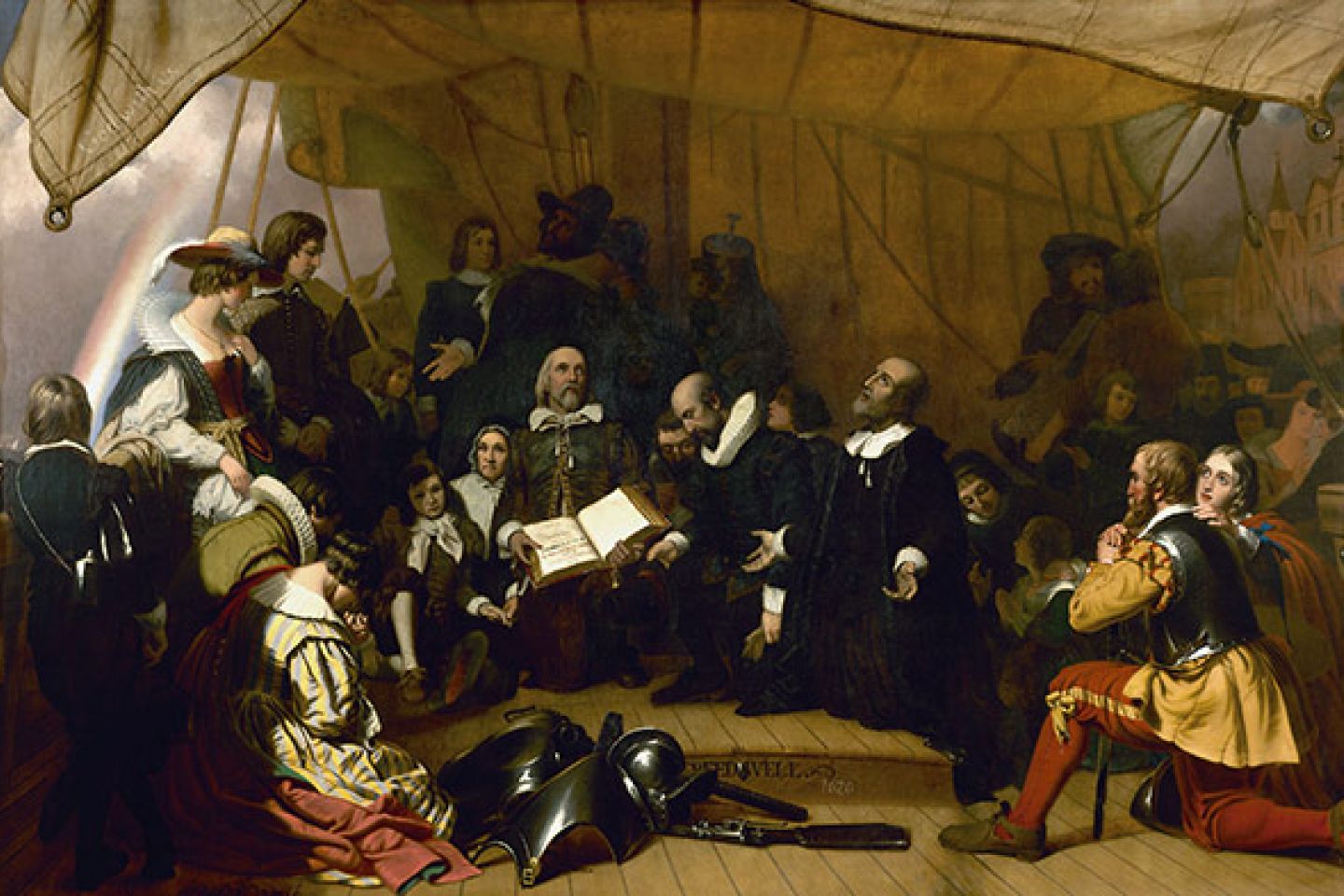10th August 2020
This year marks the 400th anniversary of the historic journey of the merchant ship the Mayflower, in which 102 people set sail from Plymouth, England hoping to start a new life in New England, America.
For some of this group, the motivation for this journey was predominantly religious. England had been Roman Catholic until Henry VIII broke away from Rome and established a Protestant Church of England. However, one group of Protestants felt that the Church of England was still too close to Catholicism. They wanted to ‘purify’ the church and return to a simpler, less structured form of worship and became known as Puritans. Another group were even more strongly against the new Church of England and wanted to establish a new separate church altogether – they were called Separatist Puritans.
In 17th century England it was illegal and very dangerous to be a part of any church other than the Church of England, so in 1608 a group of about 400 English Separatists fled to Holland – first to Amsterdam, and then Leiden to live in exile. At the time, Leiden was a place of unprecedented religious tolerance, where they would not be troubled for their beliefs.
While the congregation in Leiden was for a time stable, it became clear to their leaders it wasn’t sustainable. Many members found it difficult to make a living due to the language barrier, and the children who grew up in Leiden began to move elsewhere for employment. Their leaders feared they were losing their English identity and looked to move again to a better place to raise their children and make a living while maintaining their values. They believed the best place to find such freedom would be in the New World.
For these reasons, and the possible threat of Spain renewing hostilities on the Dutch, the Separatists returned to London to begin their preparations. By this time, there were already colonies in both North and South America. The Dutch had a colony on the Essequibo River in the Guiana region – known today as Guyana – while the Spanish colony of St. Augustine in Florida had been founded in 1565, and the English settlement in Jamestown had been established in 1607.
While these colonies had survived, there had been many more which perished, and the Separatists knew resettling in America would be uncertain and dangerous. But settling too close to other colonies wasn’t an option for them – any Dutch influence would be unwelcome, and they didn’t want to face the same issues they had in England by settling too close to Jamestown.
In June 1619 they obtained a land patent from the Plymouth Company, with the settlement intended at that time to be at the mouth of the Hudson River – close enough to the Jamestown colony to be beneficial, but not too close. King James I granted the charter, although it was with the condition that their religion would not be recognised.
Only a small group of the Separatists were able to settle their affairs quickly and set off for America – the majority of the congregation stayed behind in Leiden. Those ready to travel purchased a small ship, the Speedwell, to transport them across the Atlantic and to use on their arrival. At the port of Southampton in England, the Separatists in their ship were joined by a much larger group of less religious English Colonists in their rented ship, the Mayflower. These Colonists were being financed by a company of investors, with the intention that they would ship goods such as furs, fish and timber back to England for sale.
On 5 August, the Mayflower and Speedwell set sail for America from Southampton – with ninety passengers on the Mayflower, and thirty on the Speedwell. But the Speedwell began leaking and both ships twice had to return to England. The Separatists were forced to leave their unseaworthy ship and it was agreed that they would travel on the Mayflower instead – but there wasn’t enough room for all of them. Eventually 28 members of the congregation boarded.
Finally, a month after its first departure from England, the Mayflower set out alone with 102 passengers and 30 crew, on a journey that would change the course of history. Today they are known collectively as the Pilgrims, but the Separatists with their hopes for religious freedom called themselves ‘Saints’.
Image: Embarkation of the Pilgrims, by Robert W. Weir, 1843, via Architect of the Capitol.
